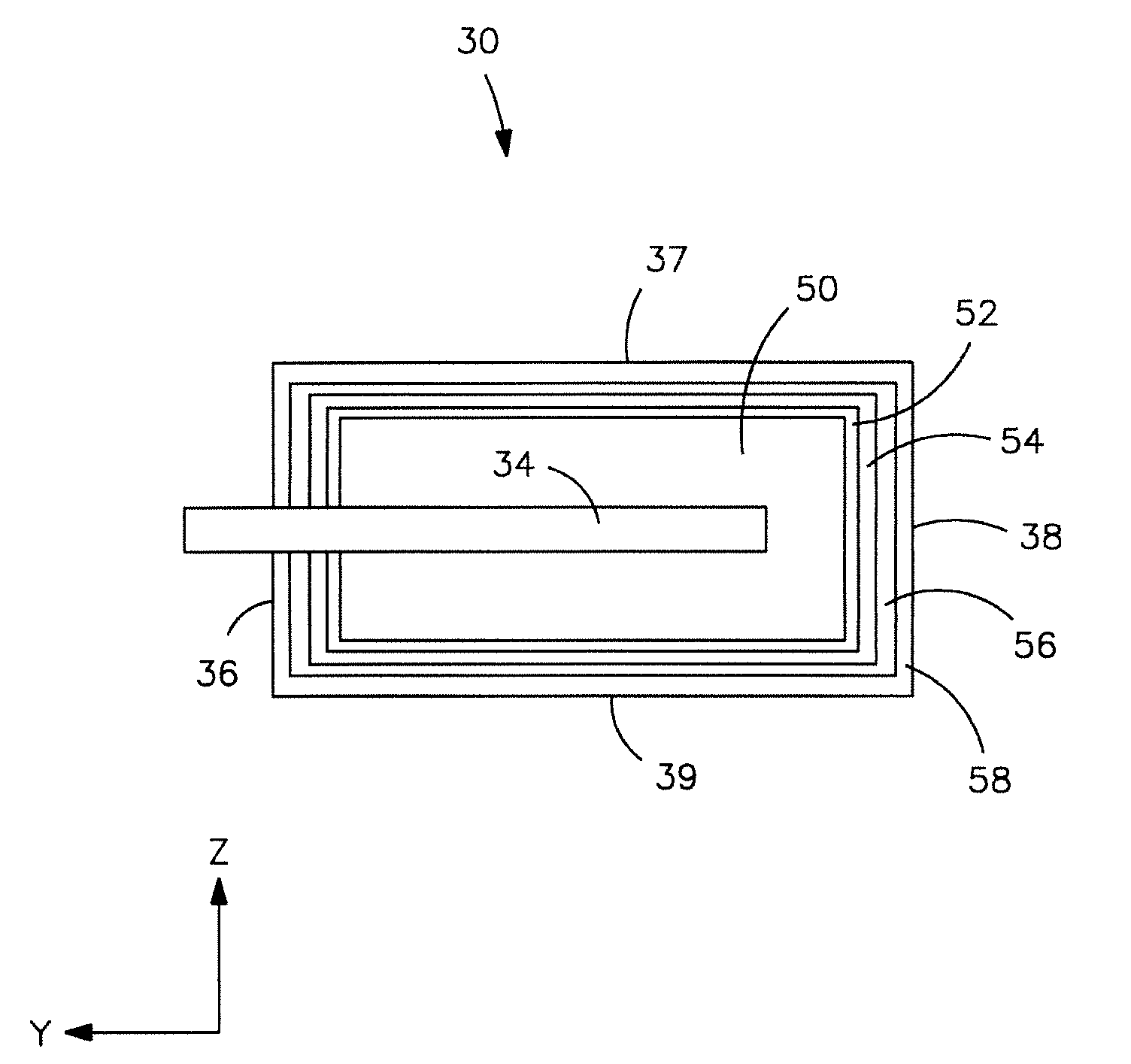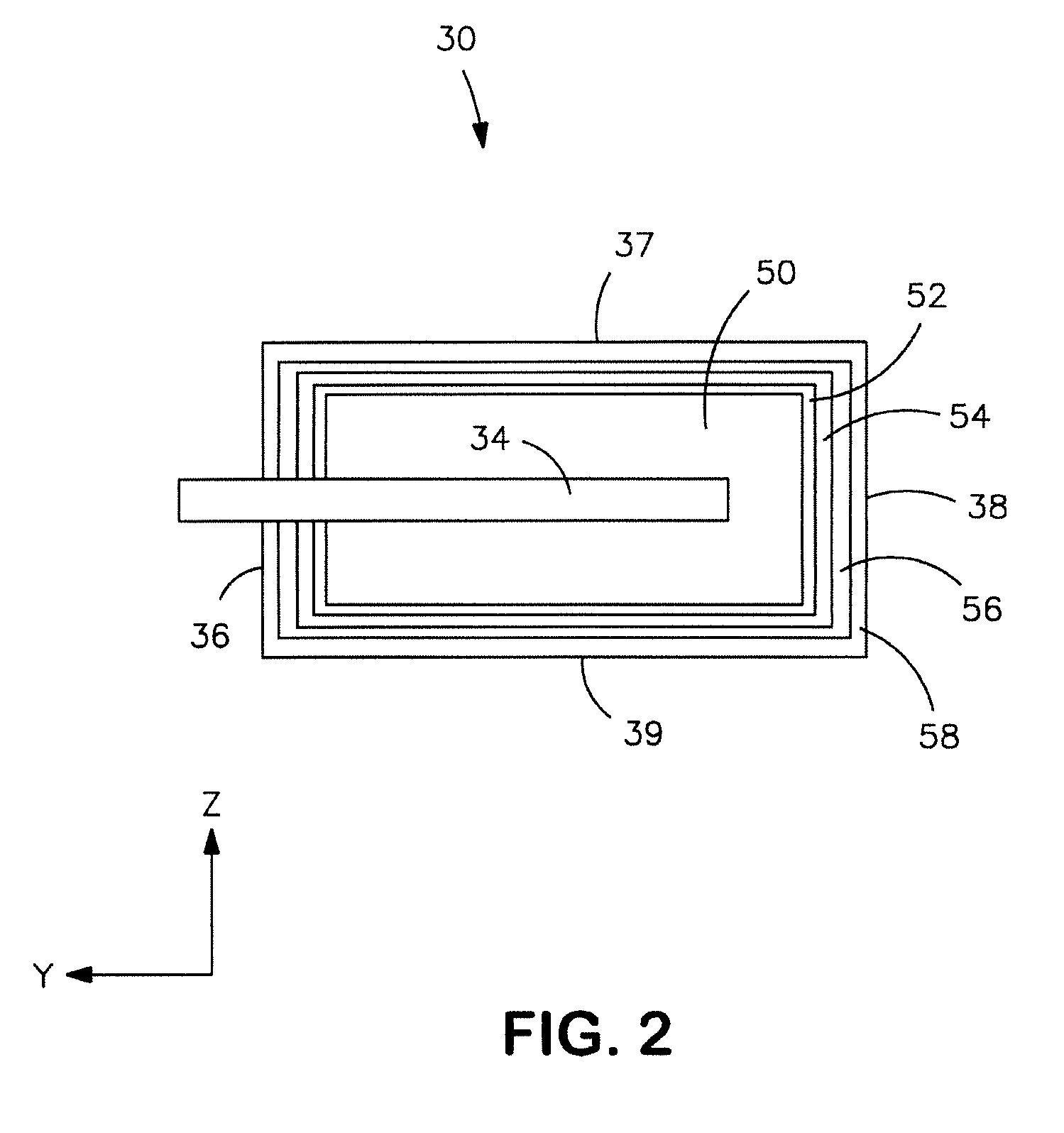Sintered anode pellet treated with a surfactant for use in an electrolytic capacitor
a technology of surfactant and anode pellet, which is applied in the manufacture of electrolytic capacitors, capacitor dielectric layers, variable capacitors, etc., can solve the problems of leakage current instability at accelerated temperature and voltage load, and problems that arise often
- Summary
- Abstract
- Description
- Claims
- Application Information
AI Technical Summary
Benefits of technology
Problems solved by technology
Method used
Image
Examples
example 1
[0041]80,000 μFV / g niobium oxide powder (HC Starck) was pressed into pellets and sintered to form a porous electrode body. Anodic oxidation was then carried out in an aqueous solution containing phosphoric acid or alkyl aryl sulfonic acid as a supporting electrolyte and phosphoric acid with 1% polyethylene glycol at ambient temperature. The anodic oxidation was done first galvanostatically to the desired voltage and than potentiostatically. The conductivity of the electrolyte with supporting electrolyte was 4.5 mS / cm. The voltage was chosen to obtain a targeted capacitance of 100 μF. After anodic oxidation, the pellets were coated with a manganese dioxide layer, a graphite coating and a silver coating. The finished parts were completed by conventional assembly technology to the B case (EIA 3528). The reflow / pressure cooker / reflow DCL stability was then tested. The results are shown in FIG. 5.
example 2
[0042]80,000 μFV / g niobium oxide powder (HC Starck) was pressed into pellets and sintered to form a porous electrode body. Anodic oxidation was then carried out in an aqueous solution containing alkyl aryl sulfonic acid as a supporting electrolyte at different temperatures. After anodic oxidation, the pellets were coated with a manganese dioxide layer, a graphite coating, and a silver coating. The finished parts were completed by conventional assembly technology to the B case (EIA 3528). The anodes were then heated and tested as described in Example 1. The results are shown in FIG. 6.
example 3
[0043]80,000 μFV / g niobium oxide powder (HC Starck) was pressed into pellets and sintered to form a porous electrode body. Anodic oxidation was then carried out in an solution containing alkyl aryl sulfonic acid as a supporting electrolyte at ambient temperature in different solvents. After anodic oxidation, the pellets were coated with a manganese dioxide layer, a graphite coating and a silver coating. The finished parts were completed by conventional assembly technology to the B case (EIA 3528). The anodes were then heated and tested as described in Example 1. The results are shown in FIG. 7.
PUM
| Property | Measurement | Unit |
|---|---|---|
| density | aaaaa | aaaaa |
| density | aaaaa | aaaaa |
| density | aaaaa | aaaaa |
Abstract
Description
Claims
Application Information
 Login to View More
Login to View More - R&D
- Intellectual Property
- Life Sciences
- Materials
- Tech Scout
- Unparalleled Data Quality
- Higher Quality Content
- 60% Fewer Hallucinations
Browse by: Latest US Patents, China's latest patents, Technical Efficacy Thesaurus, Application Domain, Technology Topic, Popular Technical Reports.
© 2025 PatSnap. All rights reserved.Legal|Privacy policy|Modern Slavery Act Transparency Statement|Sitemap|About US| Contact US: help@patsnap.com



